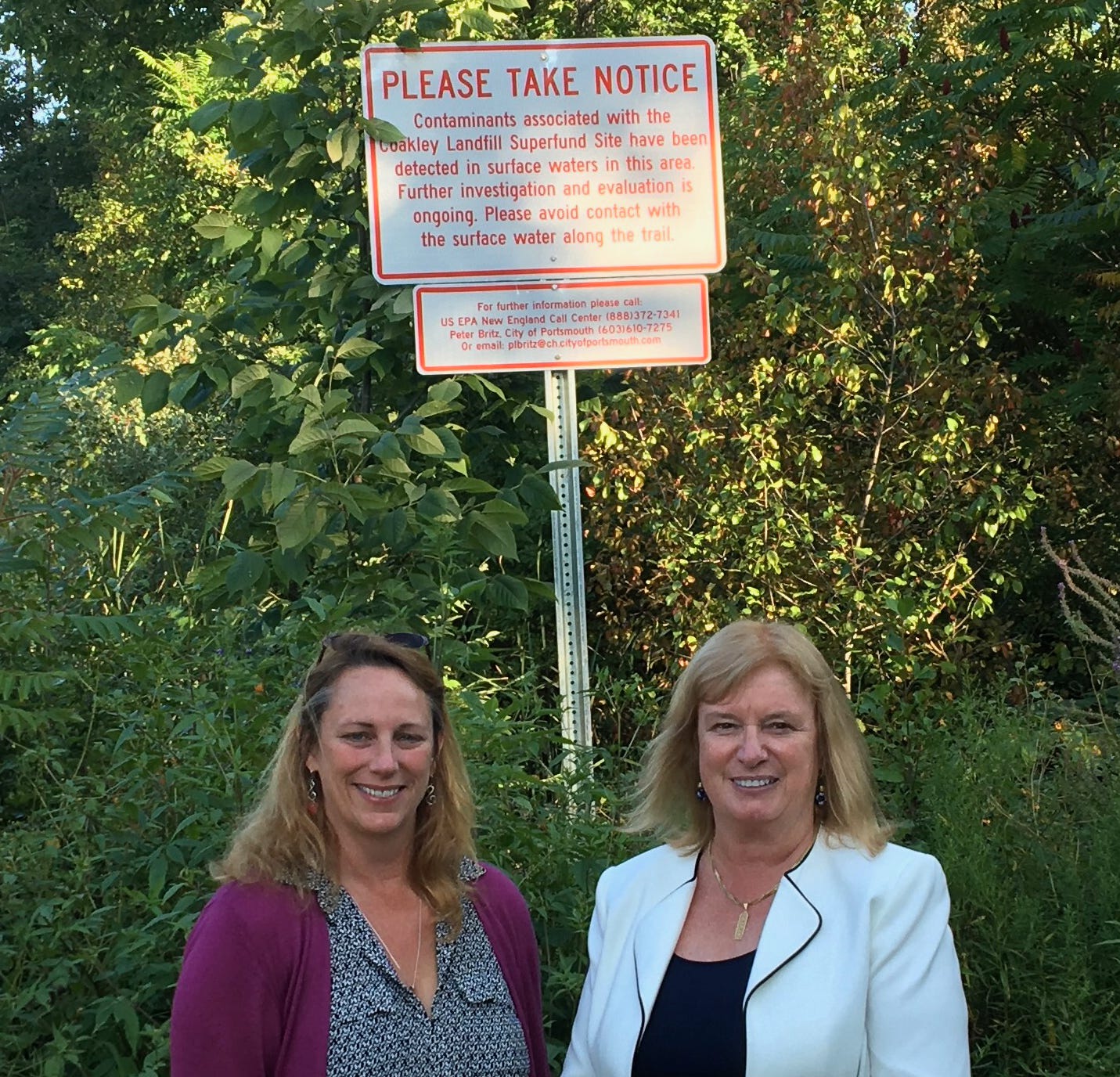This week, the US Environmental Protection Agency confirmed that the uncontrolled flow of “forever chemicals,” or per- and polyfluoroalkyl substances (PFAS), poses a danger to public health. This determination is a welcome victory for advocates who have been sounding the alarm for decades about pollution from the Coakley Superfund dump in Greenland, NH, which has threatened water supplies in Hampton, North Hampton, Greenland, Rye, and Portsmouth. The dump sits atop the highest point in the New Hampshire seacoast, and since 1971, hazardous waste and liquid chemicals have been directly dumped into cracks in the bedrock, flowing down Breakfast Hill in all directions.
Now, the “EPA has determined that there is an added risk that falls outside of EPA’s acceptable risk ranges or is greater than a Hazard Index of 1 from the incidental ingestion of surface water from Berrys Brook, Little River and associated wetlands near the Coakley Landfill Superfund Site.”
In 2016, Jillian Lane and I put up homemade warning signs to inform neighbors about the public health risks posed by chemicals in the water. Subsequently, in 2017, the Coakley Landfill Group (CLG), which includes the City of Portsmouth and hundreds of polluters such as Waste Management, Browning Ferris Industries (BFI), and Eversource, was required to post two official signs to warn the public.

The EPA now is also requiring
“the CLG shall install additional signs along Berrys Brook, Little River, and associated wetlands near the Site and along the Seacoast Greenway rail trail where the public can potentially be in contact with surface water. In addition to the existing signage at the Site, further signage shall be placed, at the least, at the following locations:
Berrys Brook crossing at Lafayette Road in Rye;
Little River crossing at North Road in North Hampton;
North side of Breakfast Hill Road at the culvert conveying Berrys Brook across Breakfast Hill Road;
A minimum of two additional signs along Seacoast Greenway rail trail for 2,000 feet north of Breakfast Hill Road; and
Along Seacoast Greenway rail trail at the south-west corner of the landfill property.
The signs shall include at least the following language: “Contaminants associated with the Coakley Landfill Superfund Site have been detected in surface waters in this area. Avoid contact with surface water” and the following contact information: EPA New England Call Center (888-372-7341), and a representative from the CLG.”
In an email to representatives of the Environmentally Triggered Chronic Disease Commission (Commission), the EPA said they are “also evaluating what long-term measures could be implemented to reduce contaminant migration to surface water at the Site and to protect human health from exposure to contaminants in surface water.” This is also welcome news, as the Commission has been diligently tracking and advocating for action since the state refused to take action to stop the pollution and enforce the cleanup mandated by House Bill HB494 in 2019.
I want to thank the many individuals who have advocated for action, that started with a group of women from Lafayette Terrace in North Hampton in the late 1970s. I would also be remiss not to acknowledge the many who have suffered from cancer and chronic diseases in the area, including children. Our work is not finished; significant groundwater issues still need to be addressed.
However, we can take a moment to celebrate this victory.
To read more about this journey, get a copy of my book, “Female Disruptors: Stories of Mighty Female Scientists” on Amazon or from your favorite local bookstore.

Mindi Messmer, MS, PG, CG is an environmental and public health scientist and author of Female Disruptors: Stories of Mighty Female Scientists. The book is available on Amazon, Barnes & Noble and through your local bookstore.


